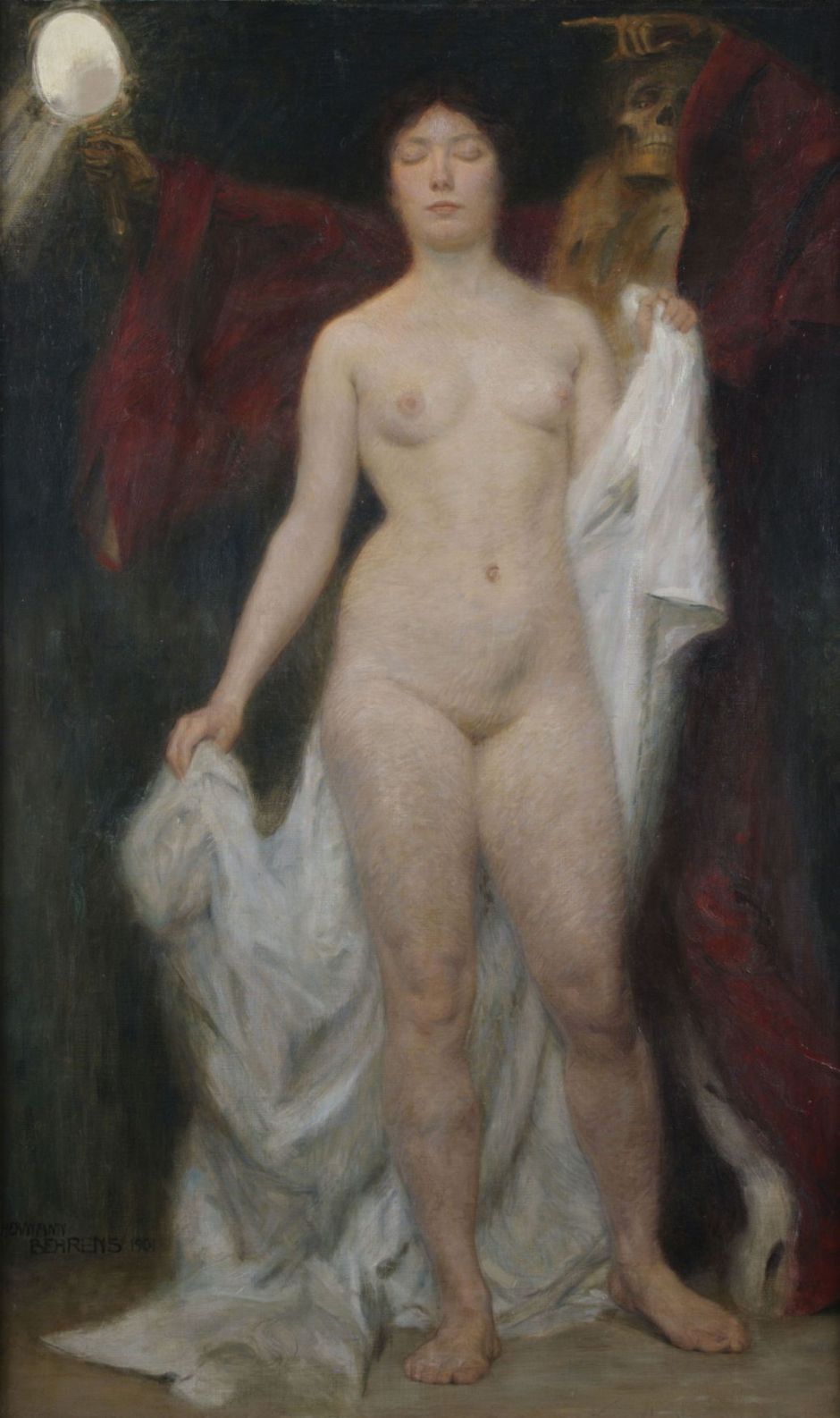Through the eighteenth century and the first half of the nineteenth, Vanitas paintings, referring symbolically to the emptiness and futility of earthly life, faded from popularity. They underwent a resurgence after 1850.

One of the vanguard in their return was the irreverent Félicien Rops, as in his cover illustration for Charles Baudelaire’s Les Épaves (Scraps) from 1866. Here he allies the skeleton of death with the seven deadly sins, named in Latin inscriptions in the lower half of this drawing.

One of Paul Ranson’s earliest paintings, made in 1885 before he had left Limoges and joined the Nabis, is his curious Vanity of Mice. Influenced by both Vanitas and an interest in witchcraft, three black mice scurry over some books of arcane knowledge, with a skull and globe behind.

C Allan Gilbert is more subtle in his compelling drawing of All is Vanity from 1892. What appears to be an image of a woman sat in front of the mirror of her dressing table turns out to be a huge skull, with the woman’s head, both its original and reflection, forming the empty eye sockets, and the perfume bottles its teeth.

Some of Paul Cézanne’s post-Impressionist paintings also feature skulls prominently. His Young Man With a Skull (1896-98) looks full of both Vanitas and ennui.

Cézanne painted several different arrangements of these, here in his Pyramid of Skulls (1898-1900), for example.
In the late nineteenth century, as it became a dominant theme in European society, death grew prominent in many paintings. The great Polish narrative painter Jacek Malczewski was among those who visited this repeatedly, with several images harking back to the Vanitas tradition, but interpreted in a contemporary way.

Thanatos (1898-9), the Greek word for and personification of death, was Malczewski’s earliest. He has revised Greek myth completely from its traditional male guise, casting the figure of death as a young woman, still bearing her symbolic scythe, but allied here with Eros. Naked under her scant scarlet robes, she sizes up an old man who is cowering at his window.

In the next, Thanatos II from 1899, the scene is set under cold moonlight at the artist’s mansion. Holding her scythe, Thanatos has regained her traditional wings, although more butterfly than bird, recalling van Hemessen’s Vanitas from over three hundred years earlier. Behind her the mansion appears to be on fire, with figures and several dogs gathered on the lawn in front of it.

Then in Death (1902), her skin assumes the ghastly green of the putrefying corpse, as she closes the eyelids of the artist himself, adding the element of self-portraiture.

Hermann Behrens brought in a more traditional skull and skeleton to personify death in his Nude Woman with Death as a Vanitas Allegory (1901).
Since then, death, skulls and other symbols associated with Vanitas have been revived in many paintings and works of art, even to Damian Hirst’s diamond-studded platinum skull of For the Love of God (2007), the ultimate combination of vanities.

In Jeylina Ever’s Vanitas Symbolizing Childhood Disease, Culture, Time Passing and Death from 2009, the symbols may be modern, but the allegory remains unchanged.
If you’re feeling a touch Vanitas at the moment, you’re in good company.

